Nezo – salt manufacturer, recently booked an off-screen popcorn box branding campaign through Motivate Val Morgan at various VOX Cinemas locations across the UAE.
The branded popcorn tubs were distributed to moviegoers starting Thursday 21st November 2019, and will continue to be dispensed until stocks last.
The aim of the campaign was to highlight the importance of Nezo salt in food items, similar to the importance and significance of having popcorn while watching movies at the cinema.
A total of 50,000 popcorn boxes were branded with Nezo graphics. 5,000 boxes were allocated at each cinema location. The campaign kicked off at VOX Cinemas – Mall of the Emirates and also ran across the following VOX locations:
Mall of the Emirates
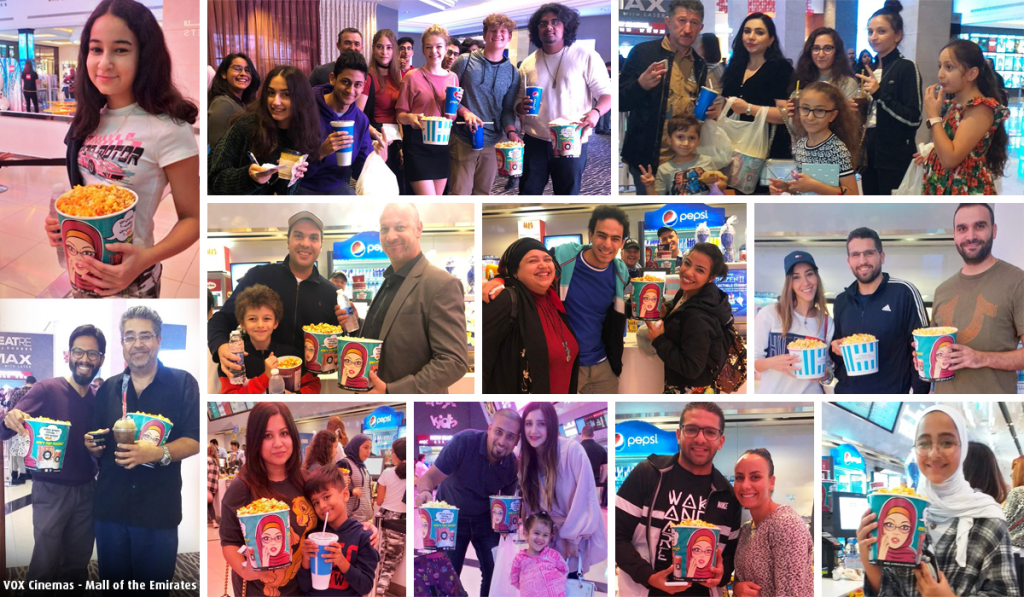
Cineplex Grand Hyatt
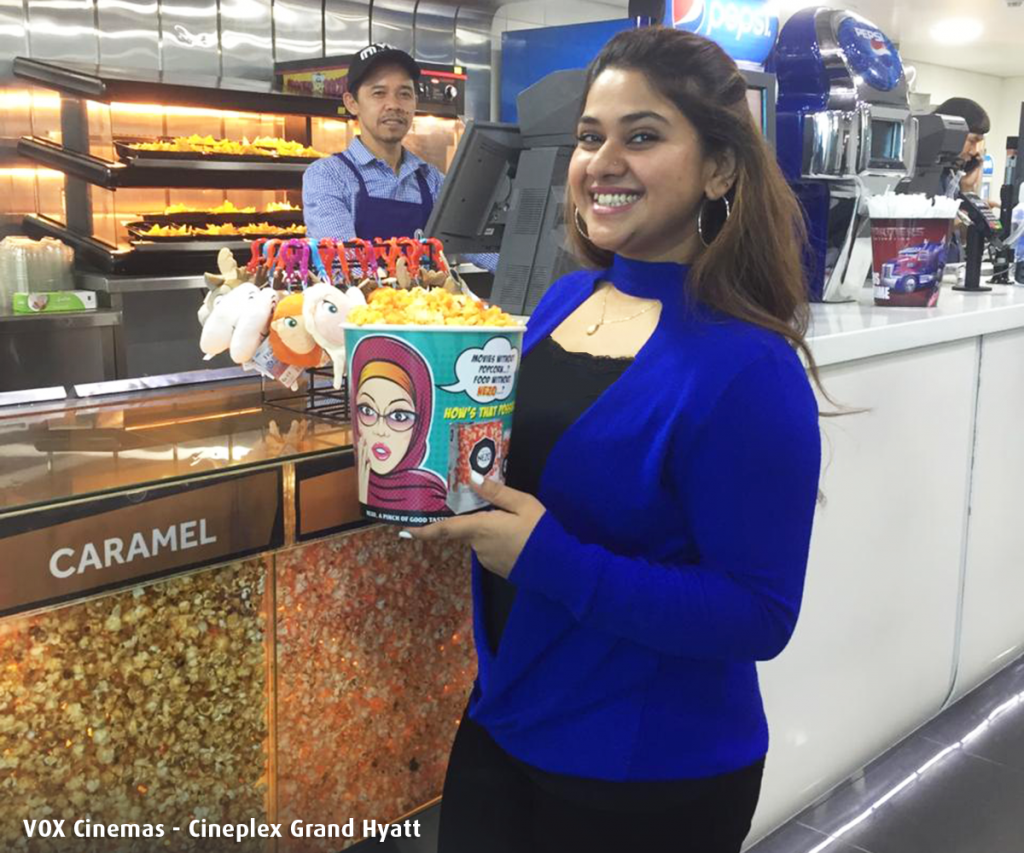
Mercato

City Centre Deira

Burjuman
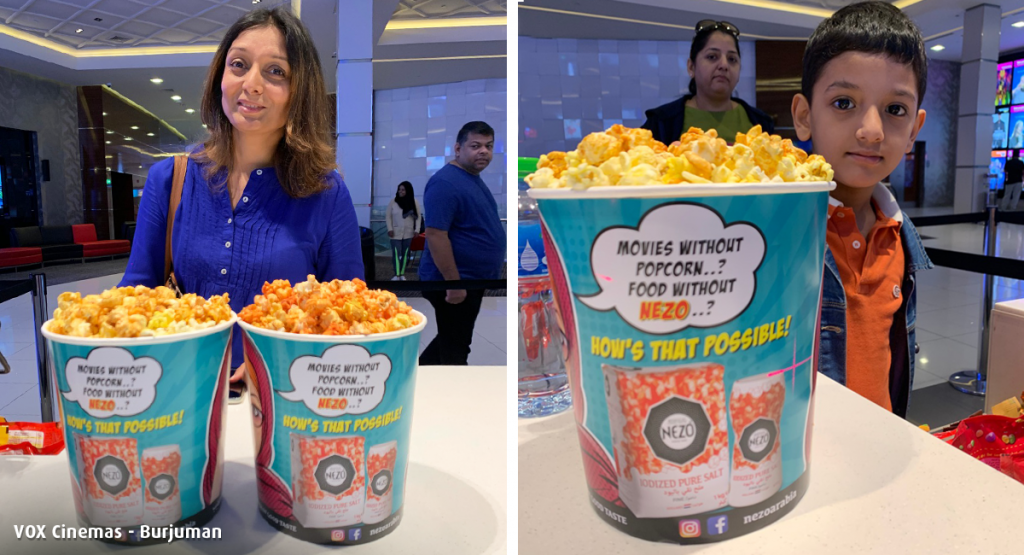
City Centre Sharjah
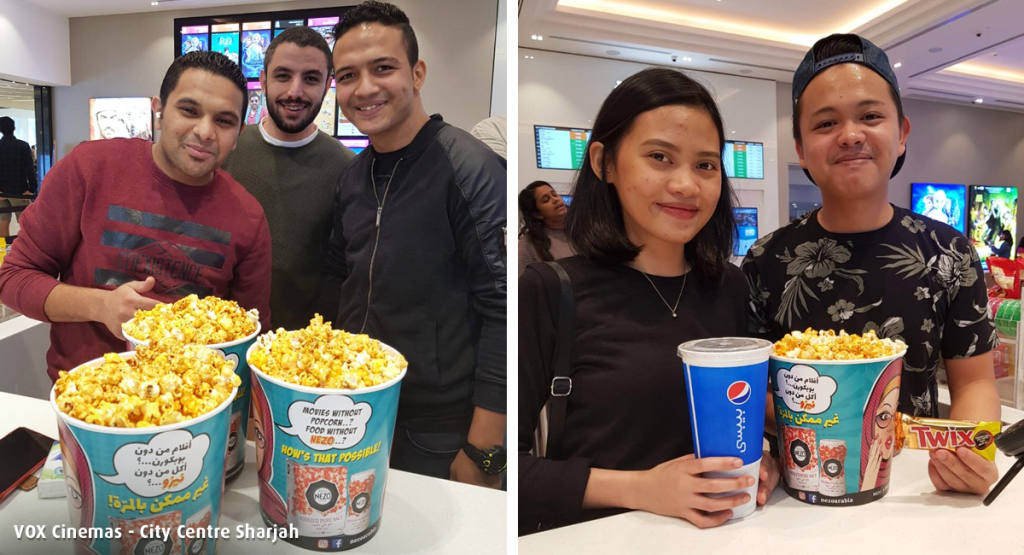
City Centre Ajman
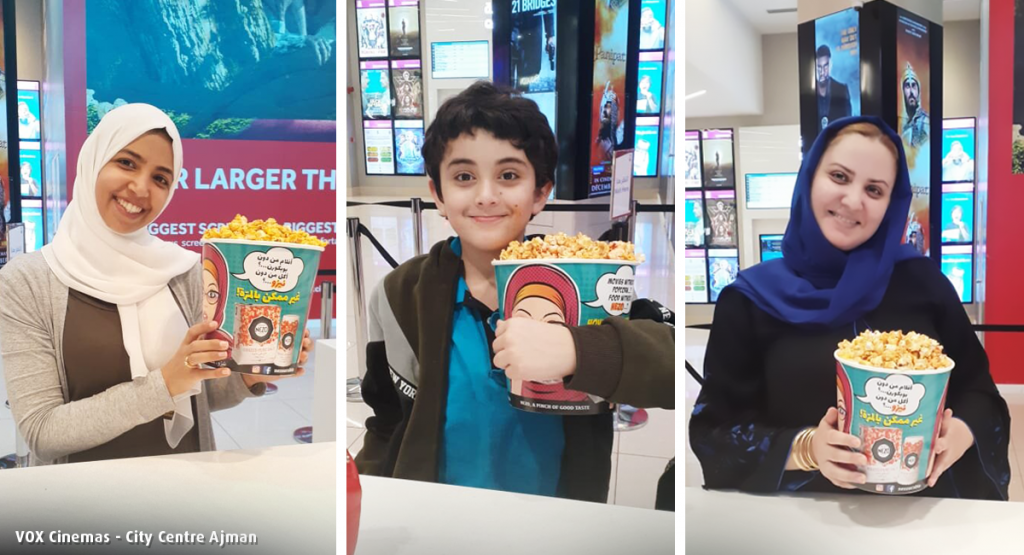
Marina Mall – Abu Dhabi
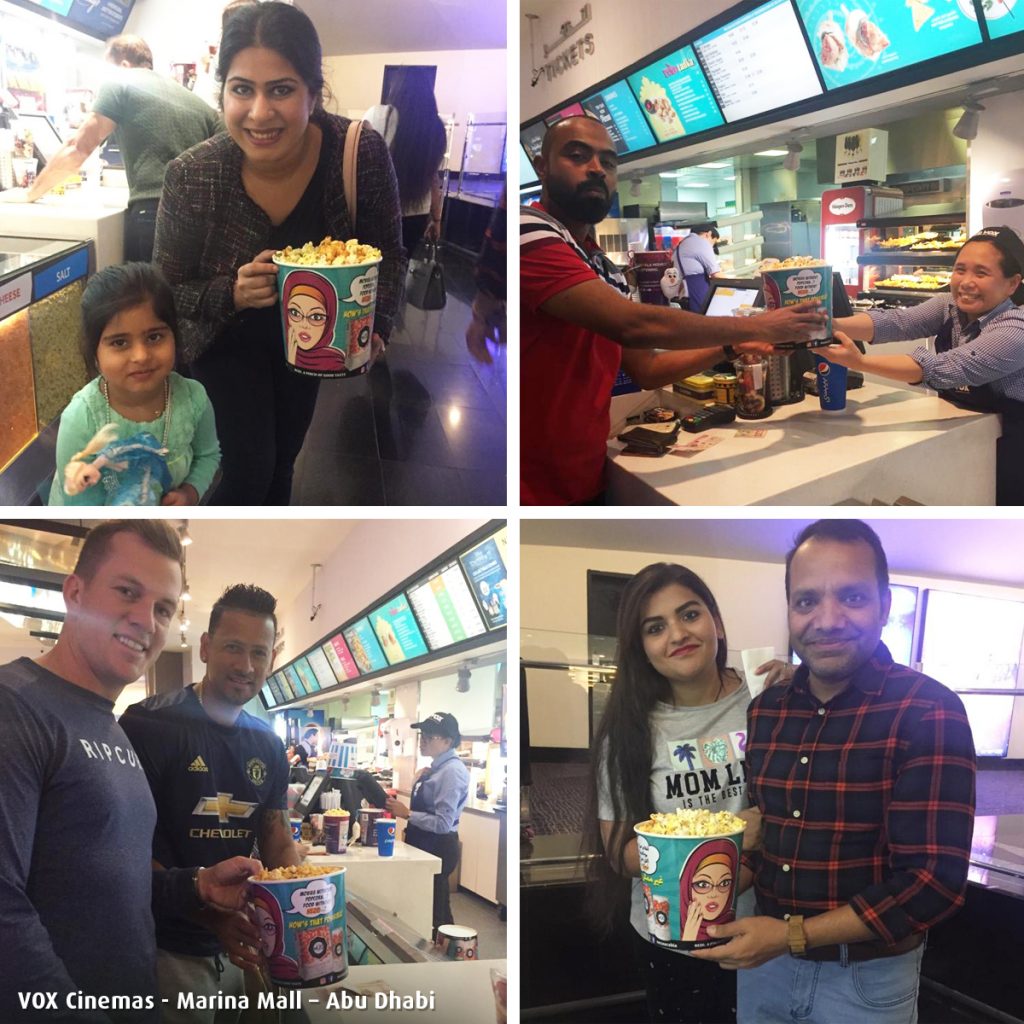
Al Jimi Mall – Al Ain

The campaign also ran across VOX Cinemas – City Centre Mirdif.
Other off-screen advertising opportunities include:
Got a campaign which would require off-screen cinema advertising?
Contact a member of our sales team for more information on branding options and on/off-screen advertising opportunities across the Middle East!
Related Articles:
Landmark Group | Pillar Branding | VOX Cinemas – Mall of Egypt
Sony PS4 | Marvel Spider-Man | Cinema Campaign
VOX Cinemas opened its third location in Cairo, Egypt at City Centre Almaza on 1st October 2019.
City Centre Almaza is the fourth and latest addition to Majid Al Futtaim’s portfolio in Egypt – which also includes Mall of Egypt, City Centre Maadi and City Centre Alexandria
Located in the heart of Heliopolis, City Centre Almaza spans over 100,000 square meters and features unique retail spaces, dining outlets and exciting lifestyle experiences – providing great moments for both residents and tourists in Cairo. The mall is also set to become one of the favoured destinations for shopping and entertainment over the next couple of years.
VOX Cinemas at City Centre Almaza is home to 16 state-of-the-art screens with a total of 1401 seats, and includes IMAX, MAX, Kids, 4DX and Gold Class experiences.
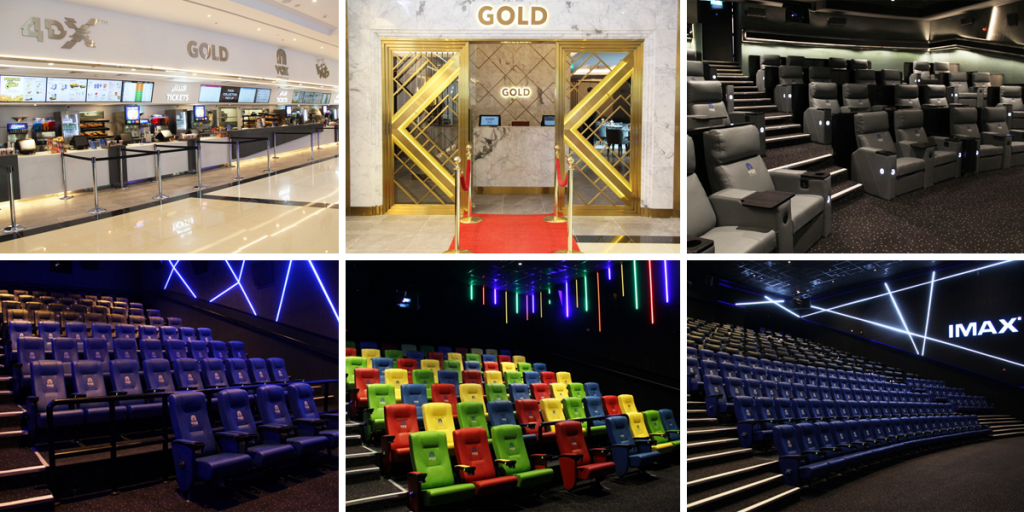
The cinema exhibitor presently operates 44 screens across 3 locations in Egypt:
Mall of Egypt – 21 screens with 2288 seats
City Centre Alexandria – 7 screens with 1626 seats
City Centre Almaza – 16 screens with 1401 seats
Motivate Val Morgan congratulates VOX Cinemas on its opening at City Centre Almaza in Egypt and warmly welcomes this new location to our regional cinema circuit.
Contact us for more information on cinema advertising opportunities in Egypt.
For more information on locations and movie timings in Egypt, visit https://egy.voxcinemas.com/
Sources: Daily News Egypt, VOX Cinemas and Majid Al Futtaim
Related Articles
VOX Cinemas Opens at City Centre Alexandria in Egypt
VOX Cinemas Opens at Mall of Egypt – Cairo
The gang is back but the game has changed!
In Jumanji: The Next Level – releasing 12th December 2019, the players return to the world of Jumanji to rescue one of their own, only to discover that nothing is as they expected.
The players – Spencer, Martha, Smolder Bravestone, Fridge and a few new faces, brave parts unknown and unexplored (from the arid deserts to the snowy mountains) in order to escape the world’s most dangerous game!
Watch the trailer of the Jumanji: The Next Level 2019:
Here’s what we know about the movie so far:
Rating:
The MPAA has yet to announce an official rating, but it will probably be PG-13. The first Jumanji in 1995 was PG, but this is more of a direct sequel to Jumanji: Welcome to the Jungle (2017), which earned a PG-13 rating in 2017 for adventure action, suggestive content and some language. It can be presumed that the movie’s rating in the Middle East will end up being PG-15 for cinemagoers.
Will Jumanji: The Next Level Connect to the previous films?
It was initially thought that Jumanji: Welcome to the Jungle would be a reboot of the Jumanji franchise. Instead, it was a sequel to the 1995 Robin Williams movie. It didn’t have many references to the original, but it was clear that it was set in the same universe. Director Jake Kasdan states he plans to have Jumanji: The Next Level connect to both previous films, but especially Welcome to the Jungle.
Director:
Jake Kasdan has directed numerous theatrical films such as: Zero Effect (1998), Walk Hard: The Dewey Cox Story (2007), Bad Teacher (2011) and Jumanji – Welcome to the Jungle, as well as episodes of TV shows such as: Freaks and Geeks, New Girl and Fresh Off the Boat.
In 2006, Kasdan received his first Golden Globe nomination for Walk Hard: The Dewey Cox Story (2007) – Best Original Song (shared with John C. Reilly, Judd Apatow, and Marshall Crenshaw).
Kasdan’s proven ability with smart, teen-based comedy, earned him the directing job for Orange County (2002) – starring Jack Black, Colin Hanks and Schuyler Fisk.
Mostly known for R-rated comedies, Kasdan came out of nowhere to prove he could helm a PG-13 action-comedy with major stars Dwayne Johnson, Kevin Hart, Jack Black, Karen Gillan, and Nick Jonas. Jumanji: Welcome to the Jungle (2017) also directed by Kasdan, went on to become one of Sony’s biggest box-office hits ever.
Hailed as the ‘Helmer of Jumanji series’, Kasdan states the upcoming installment will sew in even more nods to the original Robin Williams classic.
Who’s returning in Jumanji: The Next Level?
Almost every major player from Jumanji: Welcome to the Jungle will appear in Jumanji: The Next Level, although we’ll get to see several of them in brand-new light.
Dr. Smolder Bravestone
In Jumanji: Welcome to the Jungle (2017), Dwayne Johnson got to play against his type even though the person playing his avatar was nerdy, allergy-prone Brantford High School student Spencer. However, in the sequel, Johnson’s game avatar (Smolder Bravestone) will play to his literal strengths – a confident and clearly very muscular archaeologist and international explorer.
Professor Sheldon “Shelly” Oberon
Jack Black had a fun role in Welcome to the Jungle as Professor Sheldon Oberon. His cartographer was played by popular, self-absorbed pretty girl Bethany, who was not expecting to be Black’s ‘overweight middle-aged man’. This time round, as seen in the trailer of The Next Level, Fridge (Kevin Heart) ends up in the body of the ‘old, fat dude’ avatar.
Ruby Roundhouse
Karen Gillan plays “killer of men” Ruby Roundhouse, a fierce martial arts and dance fighting expert. Her avatar was played by shy high school student Martha.
Jefferson “Seaplane” McDonough
Nick Jonas was something of a surprise addition to the group as avatar pilot Jefferson ‘Seaplane’ McDonough. He was the avatar of gamer Alex Vreeke – a teen who got stuck in the Jumanji game in 1996. This storyline was a direct tie to the original 1995 Jumanji film, where Alex had taken shelter in the game world in a house built by the previous Jumanji player, Alan Parrish, portrayed in film by Robin Williams.
New characters in Jumanji: The Next Level:
Joining the cast for Jumanji: The Next Level are comedic acting legends Danny DeVito and Danny Glover, playing Spencer’s grandfather, Eddie Gilpin, and his friend, Milo Walker, respectively.
If The Next Level follows the same format as Welcome to the Jungle, we don’t expect to see DeVito and Glover on screen for very long, but it looks like the characters will still have a significant presence in the movie after they accidentally enter the game and wind up controlling the avatars portrayed by Dwayne Johnson and Kevin Hart.
Also coming aboard are Dania Ramirez (Once Upon a Time) and Awkwafina (Crazy Rich Asians), both in undisclosed roles. While Ramirez doesn’t appear in the trailer at all, the brief glimpse we get of Awkwafina suggests that she’ll be playing a character within the game.
The Hollywood Reporter states that Awkwafina’s role is ‘key’ and ‘significant’, leading us to guess that she’s likely either an avatar for one of the players — possibly Spencer, Bethany, or even Alex — or she’s the game’s new villain.
Jumanji: Welcome to the Jungle (2017) did $964,496,193 at Worldwide Box Office proving to be one of the leggiest (and most unexpected) blockbuster phenomenon’s in recent memory. In the UAE, the film ran for a total of 22 weeks and did over 684K admissions – 2nd highest ranking movie in UAE’s Top 10 Movies of 2017.
Boxoffice Pro is projecting Jumanji: The Next Level to make $66 – 76 million in its opening weekend in the US.
Motivate Val Morgan forecasts over 600K admissions for Jumanji: The Next Level.
Don’t miss out on advertising alongside this fun and comedic blockbuster. Contact a member of our sales for more information on cinema advertising options.
Sources: Looper, The Numbers, Boxoffice Pro, Meaww and MVM Analysis
Peugeot – French automotive manufacturer, recently booked an integrated cinema campaign with Motivate Val Morgan – through Initiative, at VOX Cinemas – Mall of Egypt.
The on screen component includes two 15 sec. ads screening in rotation from 2nd October to 12th November, 2019.
The first commercial features the all-new Peugeot 508 – which combines boldness, strength, elegance and passion. From a panoramic electric roof to sporty frameless doors to the dazzling 18″ two-tone diamond finish alloy wheels, the vehicle’s unparalleled design is far from a traditional looking four-door sedan and is complemented by cutting edge technology focused on comfort and entertainment for all those on-board – iCockpit which includes a compact steering wheel, configurable 12.3” head-up digital instrument panel and a 10” HD capacitive touchscreen.
The second commercial features the all-new 2020 Peugeot 3008 SUV which is by far the most unique in its category as it offers a variety of exterior and interior features and options – LED daytime running lights built into the headlight unit, rear LED PEUGEOT signature ‘Claw Effect’ lights designed to match the engine’s roar, chrome-winged radiator grille and vertical front-end embellished wide air intakes, captivating 8-inch touchscreen, configurable 12.3” head-up display instrumental panel, compact steering wheel with built-in controls and automatic gearbox control, to amplify the driving experience.
Peugeot also booked an off-screen campaign which included two car displays in the Foyer area of VOX Cinemas – Mall of Egypt from 3rd – 16th October, 2019. The first week witnessed the display of the Peugeot 508, while the second week showcased the Peugeot 3008 SUV.

Get in front of highly targeted, captive audiences and breathe life into your marketing mix with integrated cinema campaigns.
Contact us for more information of advertising opportunities across our circuit in the Middle East.
Related Articles:
Citroën Cinema Campaign – VOX Cinemas Mall of Egypt
Nestlé Pure Life | Cinema Campaign | Egypt
Landmark Group | Pillar Branding | VOX Cinemas – Mall of Egypt
Cinema is appealing to a more diverse group of consumers than ever before, making it an attractive platform for many brands to utilize. In order to ensure brands reach and engage their target audience effectively with their cinema promotion, there are certain consumer trends to be kept in mind, considering their potential impact on the outcome of a campaign.
The following article was published on LinkedIn by Casey Story – Organization Development Professional | Learning & Development Specialist | Sales Trainer & Coach
Kurt Wagner from Recode Media wrote an article stating that, “2019 will mark the first-time digital ad spend in the US outpaces TV and print combined.” Marketers will attest to this trend as there is a noticeable change in expectations among clients. Media planning conversations use to focus mostly around aspects including: Audience, engagement, reach, recall, like-ability, however the stakes have been shifting since 2008. Which most will remember as the year we all started walking around with cash registers in our pockets (personal smartphones).
Shifting of expectations from brands are steering agencies and media sales professionals to steer towards a ‘Positive Business Outcome’ approach to their media strategy. These teams are now focused on identifying the right consumers, reaching them in the right environment, engaging with them at the right time, and on the right devices to achieve and prove delivery of the KPI’s set forth by their clients.
While digital advertising allows brands to achieve several of these key components in the new outcome-based approach to planning, there are several considerations including: identifying the right consumers, reaching them in the right environment and engaging with them at the right time, that must still be supported by other channels in the traditional media space.
The following are three US consumer trends in 2019/2020 that make cinema advertising a more viable channel than ever to support brand goals:
Subscription Movie Going is Still Alive
Similar to blockbuster, taxi services and the music industry, the movie going industry did not feel a major disruption of their consumer’s expectations for a long period of time. The model was straightforward: negotiate with studios to fill theaters and auditoriums with blockbuster hits, sell tickets and concessions, invest in capital improvements that enhance the overall experience if/when needed. The main purpose was that the content on screen should be enough to encourage consumers to spend $10-20 dollars per ticket to see the films. Here’s where MoviePass makes its entrance.
The long-term arithmetic reflected in MoviePass’ model made it clear that without improved compensation from the circuits, the company was working on both borrowed time and money. As we know, the negotiation never happened, and MoviePass has been written down by its holding company.
The low-cost subscription model that MoviePass introduced however dramatically changed the consumer expectation regarding the cost of going to the movies. For the first time in years the exhibitors (Cinemark, Regal, AMC) have had to adjust their pricing strategy and are introducing subscription plans of their own. These actions have been well received by consumers. AMC recently announced that since launching their Stubbs A-List program (a $19.95 monthly subscription) in June of 2018, they have enrolled over 700,000 members.
This trend is important for advertisers considering cinema campaigns, because the data shows that when consumers have access to lower priced movie tickets, they see more movies. In the same article published in Variety, AMC noted that Stubbs A-List members had accounted for over 14 million movie ticket sales in the same amount of time.
Cinemark, Regal, and regional affiliates throughout the US are all working to finalize or develop their own subscription-based models to adapt to this shift in consumer expectation. What this means for advertisers is that passionate movie goers, those same consumers that drive 73% of spending in the US will be coming out in record numbers to their local movie theaters throughout 2019 because for the first time in years, they have a more affordable way of doing so.
Hollywood’s Franchise Era
The question, “When will Hollywood introduce us to new stories?” often rings in the minds of movie-goers alike. Ben Fritz’s book The Big Picture – The Fight for the Future of Movies answers this and discusses Hollywood’s shift towards the ‘franchise movie model’.
The reality is most consumers want two things when they choose to go to the movies:
Consumers may argue that they would prefer more adult dramas, romantic comedies, horror films, etc. However, the facts (historical ticket sales), reveal otherwise.
Looking at 2019’s slate of films, it is safe to say that we are in the heart of the Hollywood franchise era. The opportunities to experience something larger than life and culturally relevant are already driving record box office sales.
Captain Marvel (2019) made a total of $1,126,129,839 at the Worldwide Box Office. While remakes of popular Disney classics have been making cinema rounds. Classics such as: Dumbo made a total of $347,866,307 since its release in March 2019. Cinema-goers have also witnessed a rise in live-action remakes of popular Disney films this year, with movies such as The Lion King which made a whooping $1,638,761,919 at the box-office (to date). Whereas, the live-action version Aladdin’s live action version made a total of $1,037,017,346 since its release in May 2019.
From the Marvel Universe, the concluding film of the franchise- Avengers: End Game broke records at the box-office banking a total of$2,795,473,000 and continued to run in cinemas for 20 weeks across cinemas in the US.
The last quarter of the year holds great promise for the box office with mega sequels such as Frozen II, Jumanji: The Next Level and the concluding film of the Star Wars series: Star Wars: The Rise of Skywalker soon to release across cinemas worldwide.
Advertisers considering cinema campaigns should look closely at the historical success of the franchise model in domestic ticket sales. In the last four years, the highest grossing movies yearly in the US have come from within a franchise. This trend appears to continue throughout 2019. With the increased occurrence that moviegoers will be visiting theaters due to: Lower priced subscription service tickets and quality of content, advertisers have a unique opportunity to extend their reach among this audience year round.
Content Marketing: A Driving Force for Customer Connections
As digital spending eclipses traditional media spend this year, the digital marketplace has certainly become increasingly noisy. When adopting a positive business outcome marketing strategy, the goal is less about a brand’s ability to yell louder and more often than their competition. The goal, hence must shift, and brands must identify innovative ways to engage with their audience in an authentic manner, a trend that is leading the shift toward content marketing.
There are generally two approaches to developing a content marketing strategy:
When a brand has done well adopting either strategy, they pull their audience to their message instead of simply pushing more content into an already crowded marketplace. The impressions delivered from a content marketing strategy are much more valuable because customers actively seek out the content and actively share the message to other, like-minded, potential consumers.
Cinema is one of the last channels available for brands to tell an authentic story, at scale, in an environment with no ad skipping devices, and in front of consumers looking to be entertained.
Content marketing pieces delivered in this environment cut through the noise. Campaigns resonate with consumers, and the transparency of the cinema platform provides piece of mind for brands seeking to reclaim bot served impressions and eliminate wastage of advertising resources.
Are these trends similar in the Middle East?
Movie Ticket Offers
Leading cinema chains in the Middle East have tied up with mobile network providers (Example – du and Etisalat in UAE), offering cinemagoers to buy one movie ticket and get the other free. Similarly, numerous banks also provide customers a range of Debit and Credit card offers to availing movie-ticket and/or a free upgrade on the size of popcorn and beverages at the candy counter. Certain bank cards also offer moviegoers a buy 1 get one get one free movie ticket deal.
Such offers affirm the fact that when consumers have access to lower priced movie tickets, the frequency of cinema visits increase.
Love for Franchise Films
The craze among movie-goers for popular franchise films isn’t limited to the United States alone. Cinema statistics in the Middle East reveal the love and commitment among movie-goers in the region.
Following are statistics of UAE admissions for MEGA blockbuster franchise films:
Captain Marvel (2019)

Ran for 12 weeks and did over 425K admissions
Dumbo (2019)
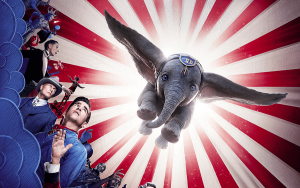
Ran for 12 weeks and did over 180K admissions
The Lion King (2019)

Did over 697K admissions in the first 8 weeks since release
*The movie is still screening across select cinemas in the UAE
Avengers: End Game (2019)
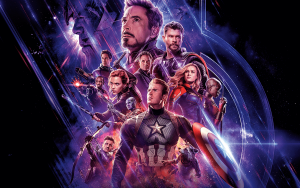
Ran for 15 weeks and did over 848K admissions
Cinema Experiences like Never Before
A number of cinema chains in the Middle East offer unique cinema experiences – thus catering to the increasing demand by cinemagoers to watch movies like never-seen before. Audiences can now enjoy the latest blockbusters on mega screens such as IMAX, MAX, Dolby Cinema, nibble on gourmet delights at Dine-in Cinemas or opt for a luxury experience such as Gold by Rhodes, Theatre by Rhodes and Platinum Suites, while lounging in a comfy reclining seats, or dive into action on with 4DX and ScreenX.
VOX Cinemas recently launched a concept of ‘Distraction- Free Cinema’ to ensure cinemagoers immerse themselves entirely in the cinematic experience by tuning out all the distractions from theatres which include: no use of mobile phones or smartwatches, no late arrivals and no guests under the age of 18. Ninja-like staff are on surveillance inside the cinema throughout the screening.
In summary….
As price discovery, consumer targeting capabilities continue to improve the effectiveness of a brand’s digital execution, it’s important for marketers to identify the channels that allow them to reach a brand’s right consumer, in the right environment, at the right time, with a creative and authentic message.
Based on the forecast of movies, the trends in consumer behavior, and a shift in how brands are building relationships with their audience, there has never been a better time to double down in the cinema space.
Source: LinkedIn, Vox.com, AdAge, The Numbers, MVM Statistics
Serving effective ads which simultaneously enhance viewer experience is a perennial goal of the advertising industry, however in tough times it is often the bottom line that receives all the focus, shuffling consumers down the pecking order. This in turn can raise the risk of customers turning to ad-free subscription services and ad blockers.
Writing exclusively for ExchangeWire – provider of global data and insight on Marketing Technology, Advertising Technology and Programmatic Advertising, Mark Inskip, CEO – Media Division at Kantar, discusses what lessons from cinema advertising can be applied to other platforms in ensuring memorable and fruitful ads, without compromising user engagement.
Those in the ad industry are living in challenging times. Last month’s IPA Bellwether Report showed overall ad spend flatlining, whilst Kantar’s own DIMENSION report of 1,000 connected consumers in the UK revealed that 55% are completely apathetic about advertising.
But it’s far from bad news across the board. Internet spend continues to rocket, and some spheres of advertising remain very much enjoyed and celebrated. Cinema, in particular, is bucking the trend, with 37% of consumers surveyed for DIMENSION saying they actively enjoy advertising at the cinema. That means an appetite still exists for entertaining brand campaigns, and offers interesting insights for brands and marketers looking to get their advertising ‘right’.
So what makes the big screen so successful, and how can we take those learnings to other platforms and touchpoints?
Make it Seamless
Think of the context in which you see cinema ads: plied with popcorn, lights dimming, you know exactly what to expect, when to expect it, and perhaps even how long to expect it for. Indeed, it’s part of the value exchange, in exchange for your ticket, you accept a certain (proportional) amount of advertising.
However, you’d never expect to see the same ad several times, or indeed have your film interrupted at a crucial scene by an irrelevant advert. And yet an enormous 70% of those we surveyed have experienced just that, admitting they’re subjected to the same adverts time and time again. This isn’t just a mild inconvenience, but an issue throughout all platforms and formats. As Video-On-Demand (VOD) grows, for example, we’re seeing more and more broadcasters struggle with the right ratio of ads to content, trying to find a balance between what’s profitable and what’s consumer-friendly. Given repeated negative experiences are damaging to brand reputation, that equilibrium is crucial.
The underlying message here is that context really matters, and that goes beyond just online and video ads. As brands delve deeper into formats like product placement, sponsorship, advertorials and the like, even the more subtle forms of consumer engagement need to be well considered so as not to be jarring.
Ultimately, if we want consumers to move past their apathy and actually engage with ads rather than avoid them, it’s crucial we approach at the right place and time, and the right frequency, so we’re not talking to a brick wall.
Make it Entertaining
Audiences are in fact much more receptive than you might think: a significant 48% of consumers do notice ads on platforms they enjoy using, whilst 41% are more likely to believe advertising that appears near another trusted brand. That means platform, placement, and timing are crucial.
Cinema gets this right. From trailers which make your hair stand on end, to full features in 3D, or even space-aged 4D, cinema elevates films to sensory experiences and takes content to the next level. After all, if it didn’t, you’d stay at home.
Of course, every platform has its own strengths, a one-size-fits all approach won’t do. But if brands can get into the right headspace and engage consumers on their terms, providing top-quality entertainment within the right context, whether an innovative format, interactive experience, or by offering actionable information, their campaigns are far more likely to succeed.
Make it Tailored
You’d never run an 18+ trailer before the screening of a U-rated film. It might sound simple, but this fairly basic level of tailoring and targeting doesn’t always trickle through to the small screen or the browser – leading to irritated consumers at best and brand safety failures at worst if content ends up in the wrong environment. 61% of the consumers we surveyed actively prefer to see ads relevant to their own interests, but the average experience leaves much to be desired. That means there’s a significant discrepancy between what consumers want and what they’re getting.
A key part of the solution is accurate targeting and measurement. To gain insights on how to create seamless, entertaining, useful advertising, brands need to give up guessing and find out exactly who their audiences are and what makes them tick – on as granular a level as possible. That means harnessing detailed customer data or working with a reliable data partner.
A positive feedback loop driven by insights will lead to exponentially better campaigns. Remember, however, that data use must be responsible; with 54% of consumers objecting to targeting based on their past activity, it’s important the value exchange for consumers is made clear so they feel supported, not surveilled.
Curtain Call
Of course, some elements of the big screen experience aren’t easily transported to the home environment, but the message is clear. Producing and serving exciting, entertaining and useful content at the right time, in the right place is key to capturing and keeping eyeballs, and accurate measurement is a key part of making sure we’re going in the right direction.
Getting consumers onside is tough, but in an era where avoiding advertising is perhaps easier than ever, it’s extremely important. Intriguing, delighting and informing is a sure-fire way to neutralise the ongoing impact of adblocking and ad-free subscription services.
Cinema advertising makes the most of its space, creative and audience to deliver gripping content, showing us advertising at its very best. With a little bit of nous, a touch of creative, and top-of-the-class measurement, we can aim to make every ad as good as on the big screen.
Source: ExchangeWire
WARC recently launched a new white paper ‘Anatomy of Effectiveness’ at the Cannes Lions International Festival of Creativity 2019
The white paper for brand marketers and advertising agencies alike, highlights five key priorities for brands seeking greater impact:
The report highlights that every element involves trade-offs and hard decisions on where to invest, and that insights and creative thinking are required to bring it all to life. But, it’s here that brands will drive better customer engagement.
It also looks at what is changing in a fast-moving industry, featuring expert comment from the likes of Les Binet, Peter Field and Jenni Romaniuk of the Ehrenberg-Bass Institute.
A key takeaways from the section ‘Plan for reach’; which Motivate Val Morgan continues to emphasize when in talks with clients, is the fact that multi-channel integrated campaigns are more effective than single-channel campaigns, particularly when they work together to increase reach.
One way to go about this would be to have longer-form ads in quality media placements such as cinema to build brand awareness, while shorter-form ads online and on TV for activations and promotions.
As per the white paper by WARC, a 2016 study conducted for the Advertising Research Foundation found that investing in cross-platform campaigns delivers a significantly higher ROI. Specifically, going from one platform to two increases marketing ROI by 19%.
Click here to download the white paper and learn how your brand could increase marketing effectiveness.
With an amazing line-up of blockbusters ahead: Fast & Furious Presents: Hobbs & Shaw (August), Once Upon a Time … in Hollywood (August), Mission Mangal (August), Saaho (August), IT Chapter Two (September), Rambo: Last Blood (September), The Joker (October), Gemini Man (October), Terminator: Dark Fate (October), War (October), Doctor Sleep (November), Frozen 2 (November), Jumanji: The Next Level (December); Star Wars: The Rise of Skywalker (December), Bramastra (December), Dabangg 3 (December) and much more, contact us to make cinema an integral part of your media plan.
Sources: WARC and Cannes Lions
How would you describe advertising of this day and age in one word? Overwhelming?
Over a hundred years ago, marketeers could choose to communicate messages through two main mediums – newspaper and radio (the first mass media form of communication that offered near real-time delivery).
Today, there is an arsenal of channels available for marketeers to convey their message – newspaper, radio, magazine, television, digital and SMS, which has led to audiences becoming immune to relentless brand messaging.
In April 2017, Procter and Gamble, one of the world’s largest advertisers, blasted the ad industry for overwhelming consumers with advertising. “There’s too much crap,” said P&G’s chief brand officer Marc Pritchard, in a speech to the American Association of Advertising Agencies – in a transcript seen by CNBC.
“We bombard consumers with thousands of ads a day, subject them to endless load times, interrupt them with pop-ups and overpopulate their screens and feeds,” he said.
With audiences tuning out as a result of advertising overload, how can brands effectively reach their target audience in this day and age?
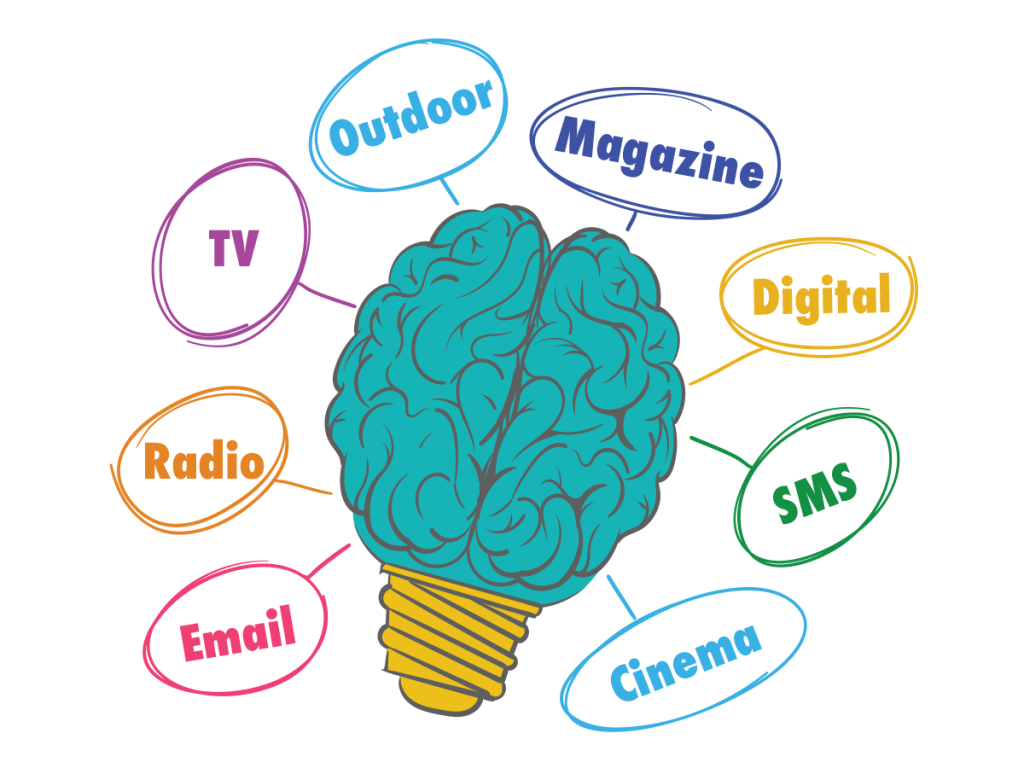
New research by MESH Experience – commissioned by SAWA, suggests that cinema is a powerful marketing platform, ideal for boosting brand influence.
The study captured and analyzed over 4,500 brand experiences from more than 1200 people across 3 countries using MESH’s proprietary ‘Real-time Experience Tracking’ approach. The categories covered in the study comprise Automotive, Finance, Services, FMCG and Electronics. Participating organizations included National CineMedia (USA), Screenvision Media (USA), Cineplex Media (Canada), and Weischer Media (Germany).

Information displayed in image courtesy MESH Experience
Below are key insights that analyses the role of cinema vs. other media:
As context for this study, and pointed out by a recent Deloitte study, it is no longer enough for brands to simply communicate features and benefits because people want to understand more about the brand’s social purpose, particularly younger people. We also know that people are overloaded with information and this probably explains why in this MESH study we saw that more than a third of paid media messages are self-reported as making people feel “neutral” towards the brand.

Information displayed in image courtesy MESH Experience
Consumer information overload is creating a challenge for brands wanting to convey more complex concepts to customers who are time-poor with less attention to give.
The study conducted by MESH Experience discovered that the cinema environment delivers the greatest proportion of positive brand experiences vs. any other media with 2 out of 3 experiences being positive and virtually no negative experiences.
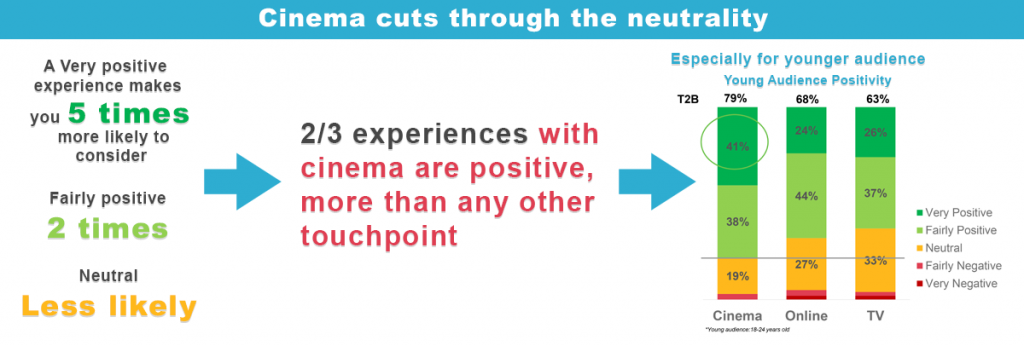
Information displayed in image courtesy MESH Experience
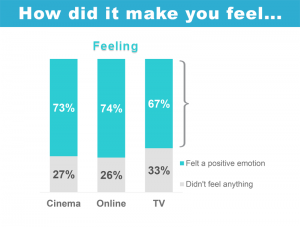
Information displayed in image courtesy MESH Experience
And this emotional engagement, where people spontaneously tell us their experience is positive, is leading to much deeper advertising comprehension:
Spontaneous descriptions for cinema brand experiences generated a word count that was 20% longer than those for online experiences and 12% longer than for TV.

Information displayed in image courtesy MESH Experience
These comments conveyed detailed product descriptions as well as depth of emotion.
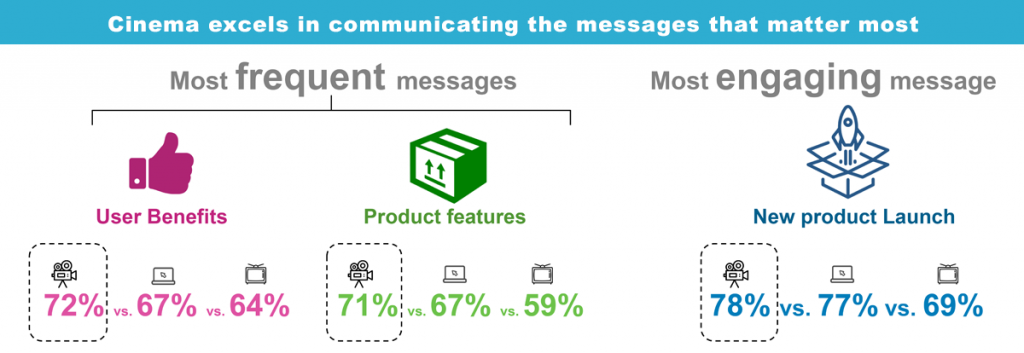
Information displayed in image courtesy MESH Experience
Cinema is generally perceived to be an awareness building medium, however, this study saw how brand experiences in cinema generate action:
Study participants who experienced brand messages in Cinema were 43% more likely to feel inspired to find out more about the brand vs. brand experiences with other media.

Information displayed in image courtesy MESH Experience

Information displayed in image courtesy MESH Experience
And the depth of a cinema brand experience makes people feel 50% more connected to others which can lead to conversation, and we see is a key driver of brand consideration.

Information displayed in image courtesy MESH Experience
There is a direct relationship between building emotional connections and establishing brand recall value, and cinema advertising allows brands to craft concrete and solid brand images in the minds of their consumers. Creating brand recall is the crucial element required in pushing sales and driving revenue.
Cinema advertising allows brands to paint a picture on a larger canvas, deliver a story with a louder voice, and communicate a message with more focused attention – all of which combine to make it the only Superhero among all advertising mediums.
Fiona Blades, President and Chief Experience Officer, MESH Experience commented “What we have discovered is that cinema has the power to penetrate deeper to connect brands to people. Even if the same creative is shown repeatedly in another medium, it may never hit the high notes of one cinema viewing. This shows the vital role that cinema can play in a brand’s media mix. And is why, when you add cinema to other media, such as TV and online, it turbocharges the impact on brand consideration.”
Cheryl Wannell, CEO, SAWA, continued “As an industry we believe in creating trustworthy environments for advertisers to communicate in. What better place to help customers understand a brand’s purpose than Cinema. This research once again validates the strength of the Cinema medium as viable choice in any campaign especially when trying to engage the hard to reach demographics of Millennials and Generation Z.”
As a result of these initial findings, a second phase is already in the works for 2019.
Motivate Val Morgan is a full member of SAWA (Global Cinema Advertising Association)
Sources: SAWA, MESH Experience, CNBC, Research News Live and On Digital Marketing
Commissioned by Motivate Val Morgan – market leader in cinema advertising across the Middle East, Ipsos – global market and opinion research specialist, recently conducted a study to decipher movie-going audiences and measure the effectiveness of cinema advertising in the UAE.
The report, Cinema 360: Audience, Advertising and Movies, examines the following:
1. Cinemagoers: habits and preferences
2. Cinema vs TV and Digital Mediums
3. Movie genre insights for specific audience targeting
The study validates the distinctive power of cinema as a medium for entertainment and advertising: premium first-run content, delivered to a captive and engaged audience, in an impactful environment, can deliver significant uplift and value to advertising budgets.
Access the reports below: